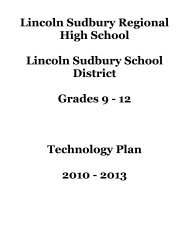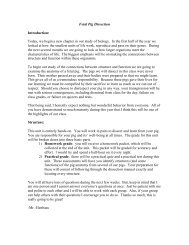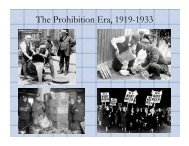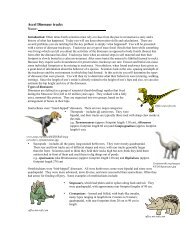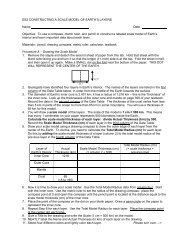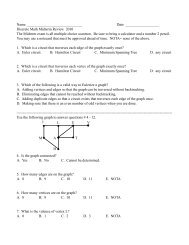Essay Writing Guide
Essay Writing Guide
Essay Writing Guide
Create successful ePaper yourself
Turn your PDF publications into a flip-book with our unique Google optimized e-Paper software.
The Parts of the Analytic Paper<br />
Introductory Paragraph: The opening sentence of the paper should grab the reader’s<br />
attention and set the tone for the paper. The rest of the paragraph should set the<br />
historical context by defining key terms and providing a brief description of the time<br />
period. The introductory paragraph should end with the thesis statement.<br />
Thesis: The thesis statement is the foundation of a persuasive essay. It asserts the<br />
author’s opinion that is supported throughout the body of the paper. Generating a thesis<br />
is hard work. Some might choose to write the thesis statement after writing the body<br />
paragraphs. A strong thesis statement is provable, well thought out, arguable, and<br />
realistic. A thesis considers the proper scope: not too big and not too small.<br />
MEAL plan: Body paragraphs should be written using the MEAL paragraph format.<br />
This format will help you to write and think like a historian. Persuasive writing requires<br />
both ample evidence and convincing analysis. Use the following habits of mind to guide<br />
your body paragraph writing.<br />
Main Idea: What is the main idea of this paragraph This main idea should be clearly<br />
articulated in the topic sentence. Each main idea should support the paper’s thesis.<br />
Evidence: What are the specific examples, quotations, and details that support your<br />
main idea<br />
Analysis: The analysis asks how your evidence supports your thesis and your main<br />
idea. The analysis answers the question: “So what” Analysis clearly explains the<br />
significance of your evidence.<br />
Link: Wrap up the paragraph and either make a “Link” back to the thesis statement or<br />
to the main idea statement.<br />
The Conclusion: The conclusion should revisit the thesis and wrap up the paper’s<br />
argument. A strong conclusion includes a connection to larger issues or themes and<br />
makes clear the significance of the analysis.<br />
Requirements for an analytic paper:<br />
1. Write using 3 rd person. Avoid using: I, me, us, you, we.<br />
2. Final drafts should be typed, using Times New Roman, 12-point font and printed using<br />
black ink.<br />
3. Final drafts should be double-spaced.<br />
4. Quotations should be used and also should be properly cited and formatted.<br />
5. Avoid using the following words: things, really.



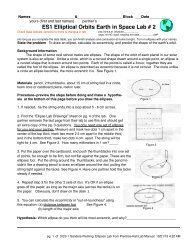


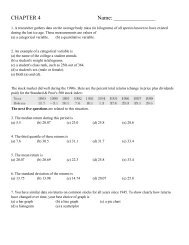


![';1asAu ro; las I sgeo8 leuo!]eslanuol aql utelqo o1 palenttouJ ue I ...](https://img.yumpu.com/49072782/1/190x221/1asau-ro-las-i-sgeo8-leuoeslanuol-aql-utelqo-o1-palenttouj-ue-i-.jpg?quality=85)
